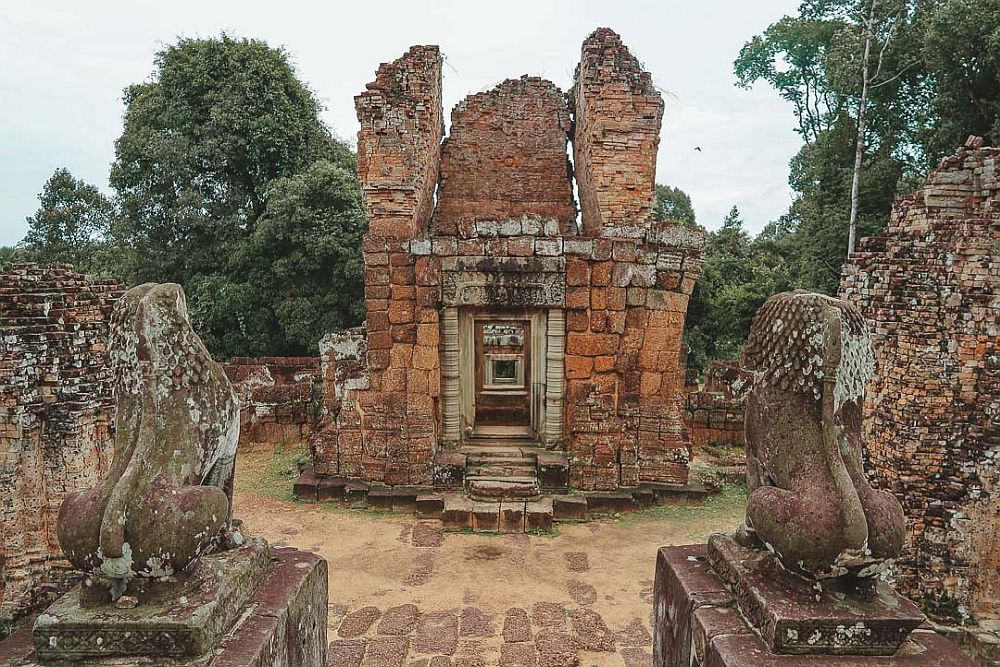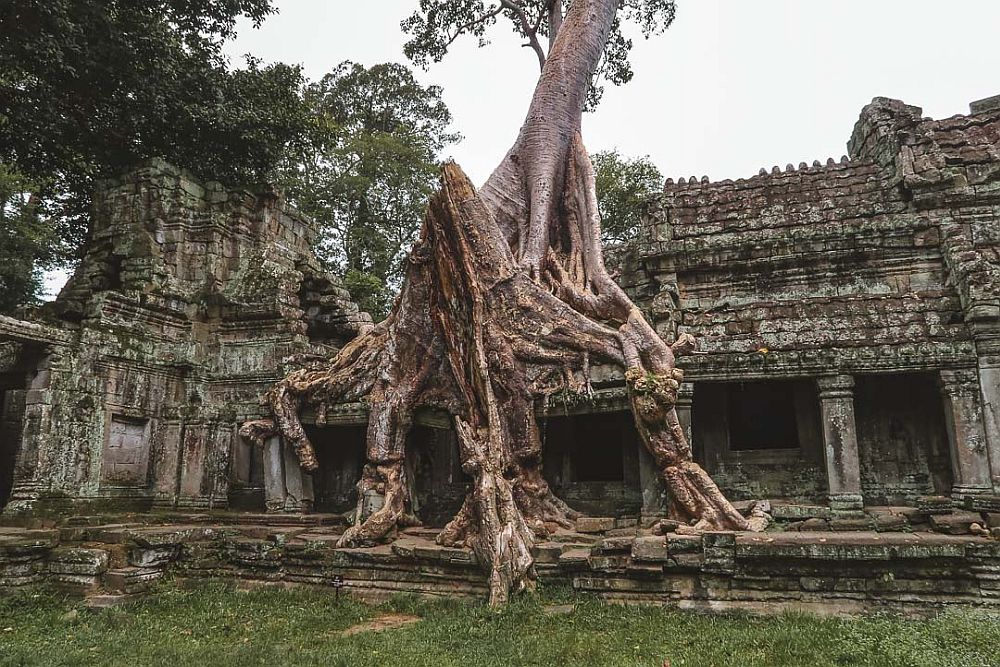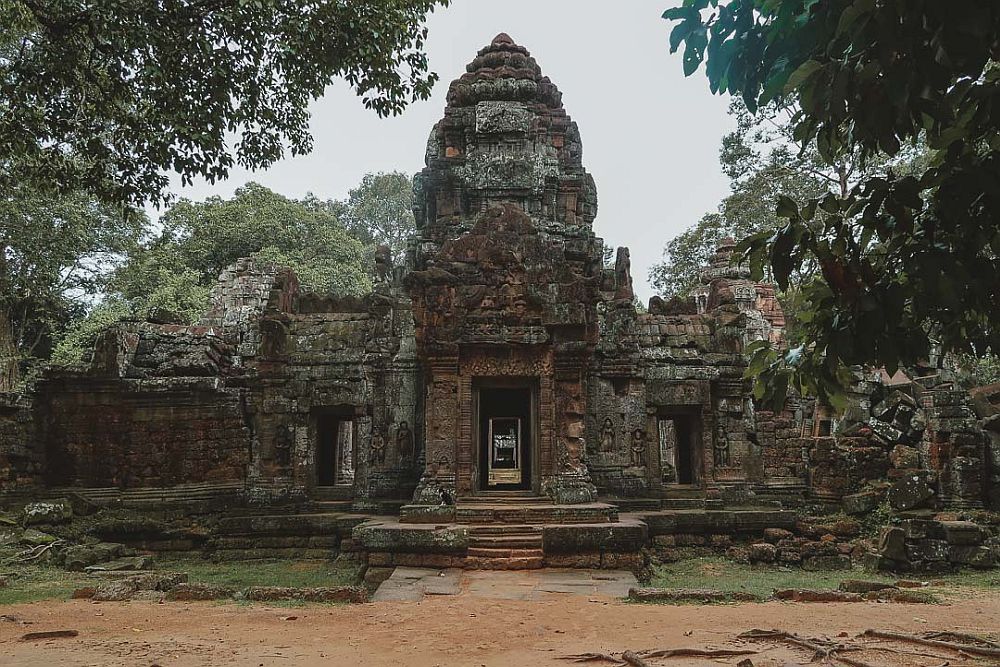Angkor
By Patricija
What is Angkor?
Angkor in Cambodia is an archeological park and the world’s largest religious monument. Home to over a thousand temples, the ancient city of Angkor was the capital of the Khmer Empire and the largest pre-industrial city in the world from the 9th to the 15th centuries.
Disclosure: This article contains affiliate links. Making a purchase through an affiliate link will mean a small commission for this website. This will not affect your price.
Now it is one of Cambodia’s and South East Asia’s biggest tourist attractions, attracting millions of visitors every year.

Why is Angkor a UNESCO World Heritage site?
According to UNESCO, the reason Angkor is a World Heritage site is that it is one of the most important archaeological sites in South-East Asia. The site comprises “a unique concentration of features testifying to an exceptional civilization …. exemplifying cultural, religious, and symbolic values, as well as containing high architectural, archaeological, and artistic significance.”
The 400-square-kilometer site (154 square miles) contains Khmer art covering the 9th to the 14th centuries. It evolved from Indian art, but developed its own style, later becoming influential all over Southeast Asia. The Khmer Empire of that period influenced the entire region in terms of politics as well. “All that remains of that civilization is its rich heritage of cult structures in brick and stone,” adds UNESCO.
What can you expect on a visit to Angkor?
Angkor is absolutely stunning both in real life and in the pictures. It’s hard to grasp just how big the park is until you’ve spent a whole day walking and only managing to barely scrape the surface of 10 temples out of the more than 1000 within the UNESCO site.
Angkor Wat is the most well-known and most visited of the temples. It has an absolutely enormous main temple, almost a half a mile long on each side. There are some magnificently detailed and well-preserved bas-reliefs here. A popular activity is to start the day by watching the sunrise over the ruins of Angkor Wat.
There are many other temples at Angkor besides Angkor Wat that are also worth seeing. Angkor Thom, like Angkor Wat, has some wonderful and huge bas-reliefs. During a brief period when one of its rulers preferred Buddhism to Hinduism, huge Buddha faces were carved into the temples. It’s a massive compound; you could easily take a full day just to see Angkor Thom well.
Ta Phrom keeps the mysterious temple-in-the-jungle vibe, with trees growing out of and through some of the temples.

Ta Keo is a massive pyramid meant to resemble Mount Meru, the home of the gods. You can climb to the top if you want.
And there are many more – it would take a good week to see all of the parts of the UNESCO site.
Some of the temples are better preserved than others, but they all leave a great fascination about the architecture and the work that went into building them. If you want to know more about the temples, then make sure you book a tour or have a look at this 1-day itinerary to Angkor.

Is Angkor worth visiting?
As the main tourist attraction in the whole of Cambodia, it is definitely worth the visit. If you also happen to be a fan of ruins, then you’ll love Angkor!
Budget travelers, movie geeks (Tomb Raider was shot here), history and ruins enthusiasts, and any kind of travelers who like learning about different cultures will love this place.
Tips for visiting Angkor
Make sure you dress modestly and cover your shoulders and knees. You will not be allowed to enter several temples if you are not dressed appropriately. Also, make sure you opt for comfortable shoes since you’ll be doing lots of walking during your visit here. I suggest you skip Angkor Wat at sunrise and begin your tour on the other end to avoid crowds.
If you only have a day, see Angkor Wat and try to see a bit of Angkor Thom at least.
Angkor Wat is the easiest part of the UNESCO site to get to, at about seven kilometers from the city of Siem Reap, where there are plenty of accommodation options. Book your accommodations at Siem Riep by clicking on the map below:
Angkor is huge. Angkor Thom, for example, looks on a map like it’s right next to Angkor Wat. In fact, Angkor Thom is nine square kilometers in size. It’ll take 10 minutes to drive in a car between the two. If you want to go to one of the further-out temples you’ll have longer drives. To Krol Ko, for example, it’ll be a 20-minute drive by car. There are others that are even further.
You’ll need a car, motorcycle, tuktuk or bike to travel to and between the temples. You can rent a car, hire a guide and driver, hire a tuktuk for the day, or rent a bicycle or motor scooter for the day.
Where is Angkor?
You will start your tour from Siem Reap and your tour guide will take you to Angkor from the city. Your driver will also take you from temple to temple since this archeological park is huge. If you opt for a tour, you will be provided with all the details you need to know.
Angkor Archeological Park is open from 7:30 am to 5:30 pm every day. A lot of people come to watch the sunrise at Angkor’s most famous temple Angkor Wat, so this temple (along with a few others) opens at 5 am. The admission fees are different depending on which ticket you buy. Find information here.
Have you been to Angkor? If so, do you have any additional information or advice about this UNESCO World Heritage site? Please add your comments below!

Thank you for your informative post!!!